Angela Slatter's Blog, page 51
October 30, 2016
Review of Vigil in The Age
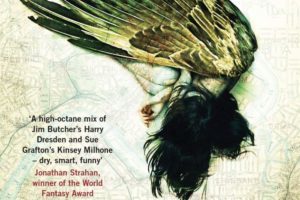 The delightful Rjurik Davidson reviews Vigil in The Melbourne Age (and the Sydney Morning Herald and The Canberra Times).
The delightful Rjurik Davidson reviews Vigil in The Melbourne Age (and the Sydney Morning Herald and The Canberra Times).
Vigil review: Angela Slatter creates a seriously weird version of Brisbane
Angela Slatter won the World Fantasy Award for The Bitterwood Bible and other Recountings, a collection of rich and dark fairytales. Since then readers have eagerly anticipated a novel. Slatter’s debut, Vigil, is a sidestep from fairytales into “urban fantasy”, a sub-genre often featuring sharp-tongued detectives operating in a paranormal world hidden in the interstices of the real one.
Descended from Victorian detective stories, this modern sub-genre usually involves some kind of magical murder that leads the detective into the shadowy fantasy world hidden beneath ours. Vigil reworks these urban fantasy tropes into an Australian setting.
The rest is here.
October 26, 2016
Keira McKenzie: In Sacrifice We Hope
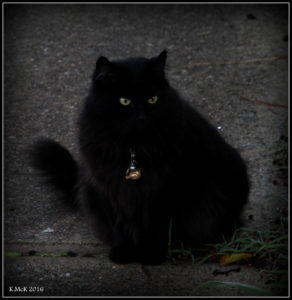
Caution: might not actually be Keira McKenzie
Keira McKenzie resides in the desert lands far to the west across the Tasman ditch. In the city by the sea, she spends her time torn between drawing/painting and writing. She has sold illustrations, artwork, short stories and essays. She doesn’t know which comes first: the painting or the words. She has a PhD somehow, despite the cat, the would-be triffids of the courtyard, and the (mostly) invisible dragons of kitchen gardens and rain drops.
1. What inspired “ In Sacrifice We Hope” ?
This story is one of the ‘oldest’ of a series of linked short stories concerning the disintegration of Perth as global climate change and all its many *primary* consequences have taken effect. The city is utterly isolated, though at the time of this story, there are still trees and there is still a sense of community. It was also the only story that could be separated from all the others, the only one that would most easily stand on its feet.
It was inspired by a novel I was writing at the time that became my PhD project, by my own concerns about what is happening to the planet and the lack of any real effort to change the trajectory of the present into this imagined future. It is therefore a mix of scientific research and letting my head loose to wreak what it will on the imagined world.
2. What appealed to you about this project?
I heard about it very late – only a few days before submissions closed. I was trying to up my confidence and was spurred on by a friend to submit – they knew I had a complete and reasonably polished story that slotted into what you were asking for. I generally write stories with characters and/or settings at the ragged edges of sanity, existence, or meaning. I was told by others that knew of yours & Dan’s previous work that if I was accepted it would be an extremely worthwhile endeavour. So I worked my little butt off to polish the story and was astonished and thrilled to have had the story accepted. The payment, regardless of size, makes it a commercial sale. I was thrilled! 
New Review of Vigil
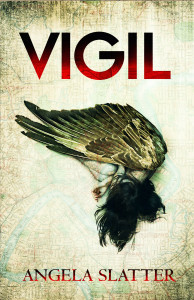 Many thanks to the delightful Maria Haskins for this great review of Vigil!
Many thanks to the delightful Maria Haskins for this great review of Vigil!
Angela Slatter’s ‘Vigil’ is a whodunnit wrapped up in a dark, urban fantasy world, and one of the many delightful things about this terrific page-turner of a book, is that both the murder mystery, and the fantasy part of the story work so well. The murder mystery kept me guessing until the very end, just the way it should, and the fantasy world Slatter introduces is rich and convincing, and peopled with a cast of odd, frightening, entertaining, and occasionally horrifying creatures – both human and…not so human.
For the rest, go here.
October 23, 2016
Hello, Hellboy
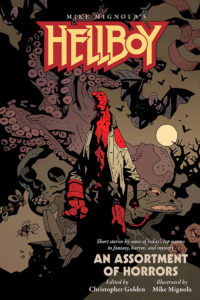 Soooo, one of the secrets I’ve been sitting on this year is the new Hellboy prose anthology, Hellboy: An Assortment of Horror, in which I haz a story.
Soooo, one of the secrets I’ve been sitting on this year is the new Hellboy prose anthology, Hellboy: An Assortment of Horror, in which I haz a story.
Very excited about this, and very grateful to Mike Mignola and Chris Golden for asking me to contribute.
Awesome ToC includes (but might not be limited to): Chelsea Cain, Jonathan Maberry, Seanan McGuire, Richard Kadrey, Chris Roberson, Paul Tremblay, Delilah Dawson, Laird Barron, Angela Slatter, Chris Priestley, Michael Rowe, Rio Youers, Kealan Patrick Burke, E. Lily Yu, Weston Ochse.
October 21, 2016
Strange California: Kickstarter
 Okay, a kickstarter for your attention: Strange California. Starring Oz’s very own, very talented, Suzanne Willis, as well as Elise Tobler and Spencer Ellsworth among others (equally talented but possibly less Australian). It’s edited by Jaym Gates and J. Daniel Batt.
Okay, a kickstarter for your attention: Strange California. Starring Oz’s very own, very talented, Suzanne Willis, as well as Elise Tobler and Spencer Ellsworth among others (equally talented but possibly less Australian). It’s edited by Jaym Gates and J. Daniel Batt.
From Hollywood to Santa Cruz to Tahoe, Strange California brings to life tales inspired by the complex mythologies of California.
Throw some shekels their way!

Unsung Stories Audio
 When I was in the UK in August I was lucky enough to be invited to read at one of the Unsung Stories gigs with awesome talents Malcolm Devlin, Rob Boffard and Elie Lee.
When I was in the UK in August I was lucky enough to be invited to read at one of the Unsung Stories gigs with awesome talents Malcolm Devlin, Rob Boffard and Elie Lee.
The noise file is now available.
I’m reading a new story, “The Red Forest”, which will be out in my new short story collection from PS Publishing, Winter Children and Other Chilling Tales. Big thanks to Olivia at Jo Fletcher Books and the lads at Unsung Stories for organising this, and to Haralambi Markov for his excellent critting of the story.
October 19, 2016
Over at Tor.com: Five Mosaic Novels You Should Read
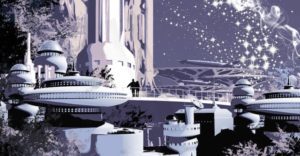
Art from Lavie Tidhar’s Central Station
Yay, my PhD didn’t entirely go to waste coz I got to write this article for Tor.com!
Five Mosaic Novels You Should Read
A mosaic novel, you say? What’s that when it’s at home? How’s it differ from a common or garden novel? Well, my favourite explanation is from the inimitable Jo Walton: “A normal novel tells a story by going straightforwardly at it, maybe with different points of view, maybe braided, but clearly going down one road of story. A mosaic novel builds up a picture of a world and a story obliquely, so that the whole is more than the sum of the parts.”
The rest is here.
October 18, 2016
Appearance at the Wheeler Centre
 I’ll be in Melbourne over the weekend teaching on Sunday, and on
I’ll be in Melbourne over the weekend teaching on Sunday, and on 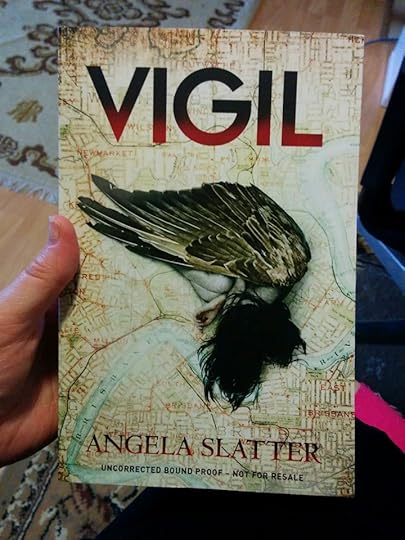 Monday 24 I’ll be doing a reading from Vigil as part of the Wheeler Centre’s The Next Big Thing.
Monday 24 I’ll be doing a reading from Vigil as part of the Wheeler Centre’s The Next Big Thing.
Speculative Fiction
What if?Untether your imagination as we explore the wild, the weird and the wondrous, in a Next Big Thing devoted to realms both impossible and eminently possible. Come and hear new stories drawn from fantastical and futuristic speculative fiction by Angela Slatter, Rjurik Davidson, Rose Mulready and Jamie Marina Lau.
Location: Monday 24 October 2016, 6.15pm-7.15pmat The Moat
It’s a free event but you’ll need to book.
A.C. Buchanan: And Still the Forests Grow though we are Gone
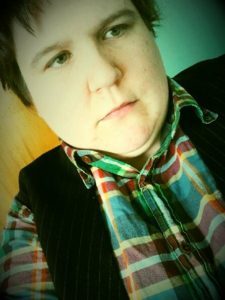 A.C. Buchanan lives just north of Wellington. They’re the author of Liquid City and Bree’s Dinosaur and their short fiction has most recently been published in the Accessing the Future anthology from FutureFire.net and the Crossed Genres Publications anthology Fierce Family. Because there’s no such thing as too many projects, they also co-chair LexiCon 2017 ? The 38th New Zealand National Science Fiction and Fantasy Convention and edit the recently launched speculative fiction magazine Capricious. You can find them on twitter at @andicbuchanan or at www.acbuchanan.org.
A.C. Buchanan lives just north of Wellington. They’re the author of Liquid City and Bree’s Dinosaur and their short fiction has most recently been published in the Accessing the Future anthology from FutureFire.net and the Crossed Genres Publications anthology Fierce Family. Because there’s no such thing as too many projects, they also co-chair LexiCon 2017 ? The 38th New Zealand National Science Fiction and Fantasy Convention and edit the recently launched speculative fiction magazine Capricious. You can find them on twitter at @andicbuchanan or at www.acbuchanan.org.
1. What inspired your story?
A chapter of my MA thesis focused on John Wyndham’s The Day of the Triffids and as part of my research I began exploring the tiny “floral apocalypse” sub-genre – which can be summarised as “plants gone bad”. I wanted to experiment with writing this kinds of story – but also to see what the genre would look like when removed from its overwhelmingly English, mid-twentieth-century setting (although I enjoyed adding a few direct references to The Day of the Triffids into the story, which I hope some readers will pick up on).
I’ve also thought a lot (it perhaps comes from living next to a major fault line) about decisions people make in the face of danger, when they stay and when they decide to leave. I wanted to create a slow apocalypse, one in which people treat each other well, until they don’t, and one in which the decisions they make are sensible, or at least understandable, until they’re not. When I’ve written this type of story before it’s been characterised by emptiness and abandonment, wide-open, disintegrating spaces – so this time I tried to add a sense of claustrophobia to the isolation, the forests closing in day by day.
I chose kelp (which is being explored as a renewable energy source in reality) mostly because it was a different type of “plant gone bad” to those I’d read about before but as the story went on it added its own flavour to my writing. Somehow German fairy tales found their way in too, and in the end it ended up as much about stories as anything else; about the stories we carry with us, and the impact they have which isn’t always within our control.
2. What appealed to you about this project?
I’ve previously co-edited two volumes of New Zealand speculative fiction, so I was thrilled to see others giving it a go (although this time extending it to include Australian specfic as well) and interested to see what spin they’d place on it. There was clearly a great team behind making it happen, and I also loved the choice of theme; not too restrictive, but enough to generate ideas.
3. What do you love about short stories?
While the word-count might seem to be restrictive, I love the flexibility and creativity that is possible within short stories, the ability to experiment with form, and how much can be said by what is left unsaid.
4. Can you remember the first thing you ever read that made you want to write?
I seem to be in a constant cycle of reading fiction I love so much that I simultaneously want – no, need – to write something inspired by it, and am left feeling so intimidated that I don’t know how I could possibly write again when there is work this good out there in the world.
My very first inspiration though? When I was five I was placed second in a local bookshop competition for a story about Mog the Cat from Judith Kerr’s series. (Mog ran away and pretended to be a horse. I’m not sure I’d ever seen a horse, and I was certainly very confused about the relative sizes of cats and horses.)
I have another very clear memory, from my mid teens, that relates back to my previous answer. I worked in a public library on Saturdays and took the liberty of flicking through books as they were returned. One of the stories I came across was James Kelman’s “Acid” which is this tiny, brutal story of only 150 words or so and yet carries more meaning and emotion than many novels. I remember standing there, stunned (and I stayed that way for a long time – perhaps I still am) not just at the horrific nature of the piece, but that so few words could do so much.
Even though there are some standout experiences, this keeps happening one way or another. Today I read A. Merc Rustad’s “Iron Aria” and was blown away – I just wanted to write something that good. I hope I never stop having this feeling!
5. What’s next for you? 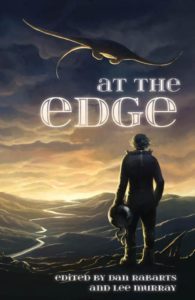
I always have short stories on the go – right now I’m writing one about a post-industrial town that moves of its own accord, and experimenting with some interactive fiction pieces.
When it comes to longer fiction, I’m working on a short novel called Ice Flight, which is set in the same world as my earlier novella Liquid City, and planning an urban fantasy series set in Wellington.
I also edit a speculative magazine, Capricious, so there’s always work to be done on that – I’m currently putting the finishing touches on Issue 4, which is food and drink themed and which I’m very excited about.
October 17, 2016
Review: Of Sorrow and Such
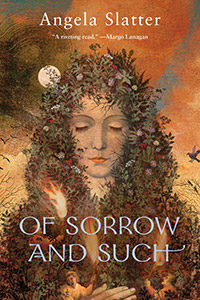 Well, a year since its release and my lovely Ditmar Award winning Tor.com novella, Of Sorrow and Such keeps getting nice reviews. Huzzah! Thanks, Alasdair Stuart.
Well, a year since its release and my lovely Ditmar Award winning Tor.com novella, Of Sorrow and Such keeps getting nice reviews. Huzzah! Thanks, Alasdair Stuart.
Mistress Gideon is a witch. The people of Eddas Meadow, the village where she lives, either don’t care or choose not to see it. Mistress Gideon is simply the woman who heals them, who helps them, who greases the wheels of the village’s quiet little society.
Until one night, a woman visits Mistress Gideon. Her visitor is bleeding to death. Her visitor shares Mistress Gideon’s secret. And her visitor is bringing chaos with her. To save a life is to take responsibility for every future action in that life.
But what if the person you save is dangerous?
Especially to you?
Slatter’s work moves with the same quiet, confident awareness as her lead character. Eddas Meadow is sketched out for us in the first few pages with a combination of affection and sarcasm that neatly defines the tone for the rest of the novella. Mistress Gideon lives in the village but she’s not of the village and she can see everything the other residents choose not to. That gives her emotional distance if not physical and it also means she can see the village, and by extension society, for what it is; a polite lie we all tell ourselves to keep the peace. It’s a remarkable, contemporary approach to fantasy that sidesteps any romanticism and makes the book instantly immediate, relatable and real.
The rest is here.



